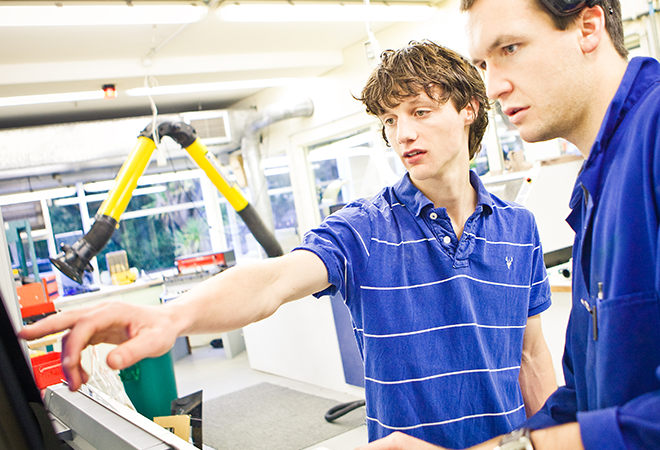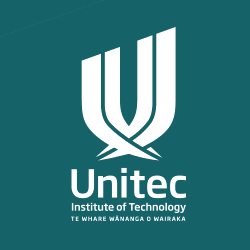
Virtual construction project management environment
Status
Completed: 16 March 2016
Project Details
A project, completed in 2016, to enhance educational outcomes for learners by creating a Virtual Construction Project Management Environment that utilises Virtual Design and Construction technologies and processes. A collaboration of Unitec Institute of Technology, University of Technology, Sydney, and Tampere University of Technology, Finland.
Aims:
The main aims of the project were to:
- enhance educational outcomes for learners by creating a Virtual Construction Project Management Environment that utilises Virtual Design and Construction technologies and processes
- create a concept that can be transferable to a variety of courses in the construction discipline, including Architectural Technology, Construction Economics, Facilities Management, etc
- contribute to the development of a more coherent knowledge base of effective teaching and learning in the construction discipline.
Methodology:
The project used action research as a central research method, with an inquiry phase, action phase, discussion and dissemination phase. The methodology involved:
- a literature review
- tests to determine students’ technical knowledge and skills at the start and end of the course
- retention and success statistics, which were compared to statistics from previous years to understand what impact the environment had had
- course evaluations to measure student satisfaction and to record their perceptions of the learning environment
- course development discussion at the end of the course to find out staffs’ perceptions about how teaching practice and the learning environment had changed and how effective the new environment was
- lecturer diary to collect: classroom observations on student engagement; verbal informal feedback from students and possible issues in the delivery for students or for the staff.
Team

Taija Puolitaival
Project Leader
Unitec Institute of Technology
Kathryn Davies
Unitec Institute of Technology
Linda Kestle
Unitec Institute of TechnologyPerry Forsythe
University of Technology, SydneyKalle Kahkonen
Tampere University of Technology, FinlandStatus
Funding
$44,100.00 (excl GST)
Key Findings
The key findings from the project included:
- The students found the environment challenging, but very engaging, and considerable improvements in knowledge and skill development were seen in all topic areas during the course. However, fitting all learning outcomes in proved to be too much. This had been signalled during the planning stage of the course and the decision had already been made to reduce slightly the emphasis of the VDC process compared to the VDC technology, and to leave a comparison of traditional and emerging methods outside the course.
- Three main challenges were encountered in setting up and managing the Virtual Construction Project Management Environment. These were related to content, delivery and development of the environment. Benefits of the environment were improved student engagement and through that, good learning outcomes in Construction Project Management (CPM) topics and especially in Virtual Design and Construction (VDC) processes and Building Information Modelling (BIM) technology for CPM.
- The Virtual CPM environment is an effective way to engage students in learning, not only Construction Management, but also VDC processes and Building Information Modelling (BIM) technology, however its use needs to be carefully considered. Considerations include how many new things, and in which depth, students can learn simultaneously, and adjustments should be made to the complexity of the environment accordingly. Because the environment is new to both students and staff, there needs to be reasonable time for the staff to familiarise themselves with the environment, process and technology, before the course delivery starts, in order that they can offer guidance to the students as appropriate.
- Model development is a time-consuming process and can easily go wrong if not planned and managed carefully. In addition to the size and type of the building, careful consideration needs to be given to what the appropriate level of development of the model items are, and what information the model needs to contain. This is to allow for appropriate analysis and simulation, but also in order to not hinder students’ learning by offering too much detail and information which could confuse them. Model authoring protocols need to be followed so that the information can then be extracted from the model with model analysis tools as required.
Key Recommendations
The key recommendations and outcomes from the project included:
Using the Guide of Practice | Use the Guide of Practice for developing and managing a Virtual Construction Project Management Environment
The concept is transferable | The concept has proved to be transferable to other construction courses, such as Construction Technology and Construction Economics. The findings have been disseminated nationally to other tertiary institutions delivering VDC subjects, and internationally via Australasian Universities’ Building Education Association Conference. An international journal paper with a focus on Building Information Model development for educational purposes is in progress and will be published 2016.
Incorporating VDC and BIM in courses | Discussions with Department of Construction staff on how to incorporate VDC and BIM better as part of the courses are underway. The discussed changes will become effective gradually, allowing time and resources for the development work needed. This change is ongoing until the new technologies and processes become business as usual.
A research report prepared by Taija Puolitaival, Kathryn Davies, Linda Kestle, Perry Forsythe and Kalle Kahkonen.
(PDF, 720 KB, 14-pages).
- 26 March 2016
A resource prepared by Taija Puolitaival, Kathryn Davies, Linda Kestle, Perry Forsythe and Kalle Kahkonen.
(PDF, 650 KB, 33-pages).
- 26 March 2016